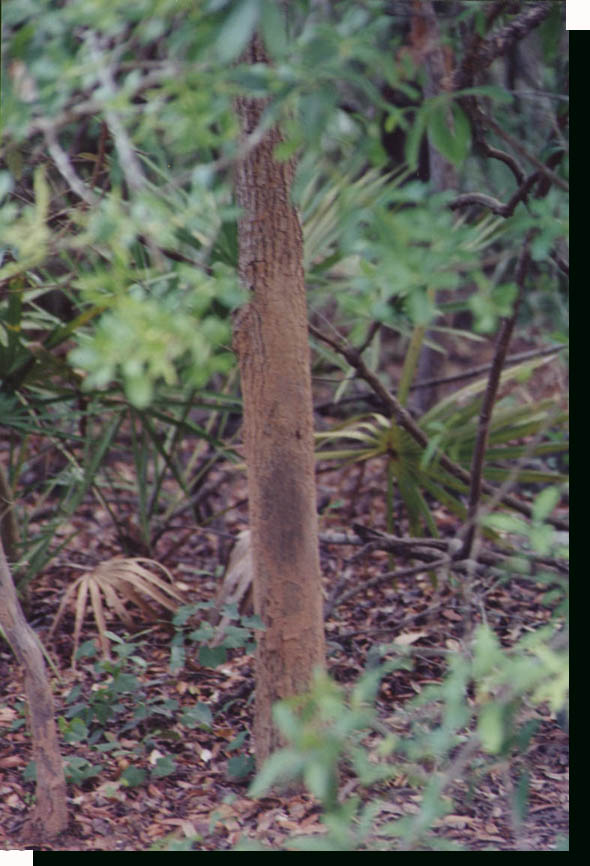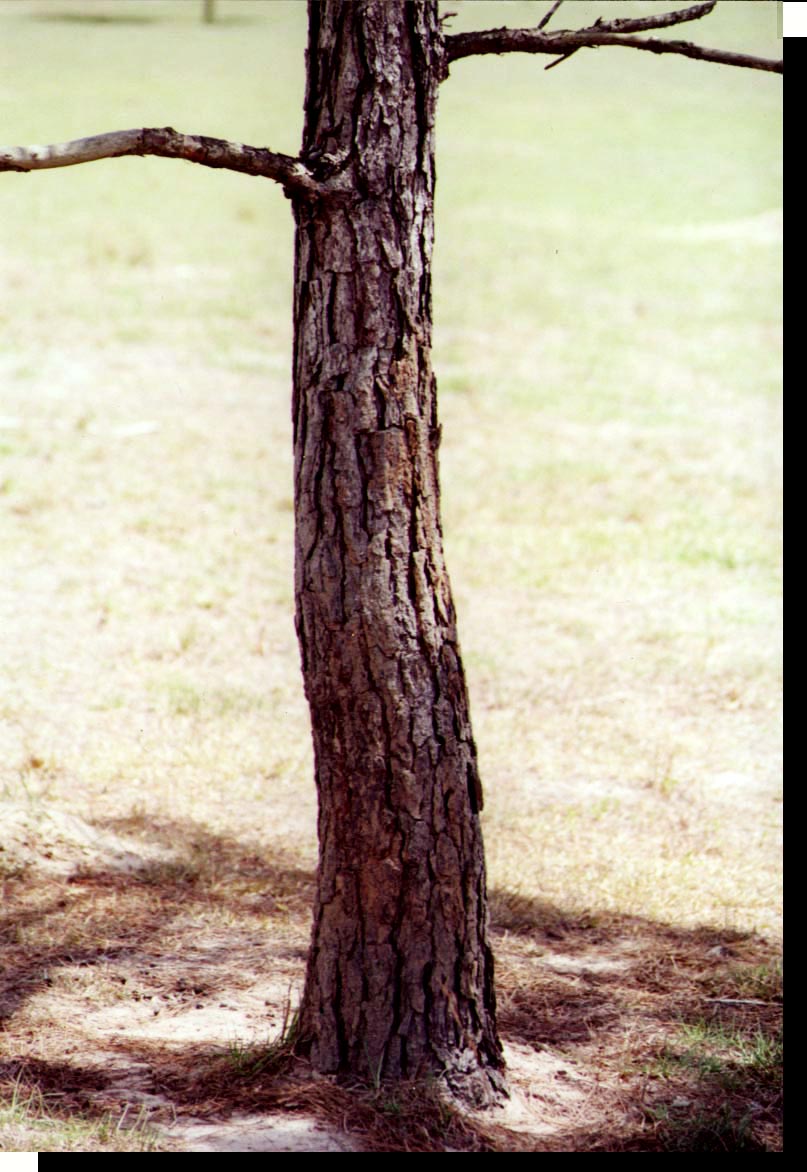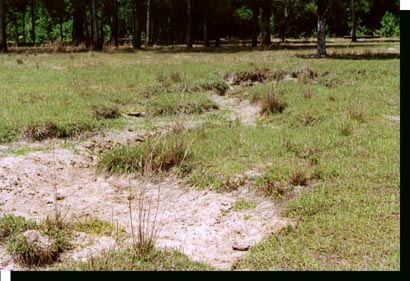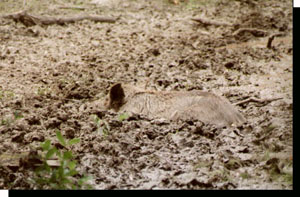
The tree rubs on our ranch that are by sandy soil are a dusty gray and have a smoother, sanded down appearance and don't have the crusty dirt plastered over the bark.



| The terrain most favored by wild hogs is moist with dense cover, and preferably near water. They love to wallow to cool off and to help insects and parasites. Unpleasantly, their wallowing behavior includes urinating and defecating in the water. After a wallow the mud caked hogs scrub their bodies on nearby trees, and the muddy tree bases are called hog rubs. |

|
This tree stands by a clay wallow. The bark is plastered with the clay. |
| This pine has
also been used as a rub. It's near a wallow that has a mix of clay and sand
soil. At the very top you can see that the bark is a crumbly, darker gray, while
below the low branch, the bark has taken on some red color and looks
caked and worn smooth. The tree rubs on our ranch that are by sandy soil are a dusty gray and have a smoother, sanded down appearance and don't have the crusty dirt plastered over the bark. |

|

|
This large hog wallow is by the pine tree above. It's dry right now, but will muddy up in the wetter summer weather. |
| The unmistakable sign. The real thing having a good wallow. | 
|
| Most hog sign isn't subtle. Besides wallows and rubs, you'll see rooting. Hogs root up acres of land,
and they've been used to plow fields. They'll flip over entire mats of forest
floor to get at the meal underneath. Uncommonly you'll see gashes in tree trunks cut by the teeth of an aggressive boar. You more often see large roots that have been chopped through with their tusks. Frequently you'll see dead wood, chewed open with chunks scattered all around, as the hog goes after the worms, insects, fungus and occasional small mammal or bird tucked into it. Hogs root their beds in the ground. They lay in the holes which keep them cool in summer, warm in winter and help them hide. The beds are large, bowl shaped craters, most often under cover, but they can be in the open too.
A sow will make a nest in a depression, on flat land or tucked into a woodpile or under palmettos. And often, just like a bird, you can see them plucking palmetto leaves and carrying them in their mouths to line their nest. The hog track is (usually) easily distinguished from a deer track (see next page for pictures), and could be one of the best signs because you can see where he was coming from and going to. Hog trails are a valuable sign. Sometimes it's possible to see worn trails on the ground and tunnels in the brush. Tunnels that you might miss seeing in the daytime, can stand out like distinct, shadowy doorways at night in your lights. You don't need a dog's sensitive nose to smell some hogs, especially a worked up boar. The unmistakable boar hog smell can knock you over, or you can just get whiffs of it. Also, it would be easy to think of the stench of a hog pen and imagine that it's what to expect around wild hogs, but you'd be very wrong. A pen where hogs are packed into dense groups with large accumulations of feces is nothing like natural conditions, and you won't find it out in the woods. Hog scat is variable in appearance depending upon the animal's diet, and and hogs will eat the feces of other hogs. Hog bristles, usually trapped on the bottom wire of fences, is one more helpful sign. Here in Florida, though, some hogs favor swamp with its dense cover and tangled vines too thick to get through. Even if there is hog sign, the odds of your getting to it, much less seeing it can be slim to none. The Southern tradition of dog hunting overcomes this problem. Hog dogs enthusiastically get though the land barriers using their sensitive noses to track down the hogs. |
|
HISTORY APPEARANCE BOARS & WATER BODY LANGUAGE FIGHTS BREEDING HOG SIGN |
HOG TRACKS DIET AND PREDATORS US DISTRIBUTION FL HUNTING REGS HOG TERMS BACK TO WILD BOARS ANIMALS |